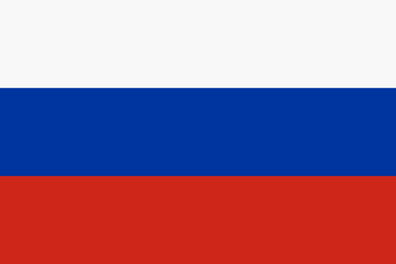Donate to Support Supercluster
Your support makes the Astronaut Database and Launch Tracker possible, and keeps all Supercluster content free.
SUPPORTSupercluster on Patreon
Your support makes the Astronaut Database and Launch Tracker possible, and keeps all Supercluster content free.
SUPPORTThis goes
to space
Meteor-M
The Meteor spacecraft are weather observation satellites launched by the Soviet Union and Russia. The Meteor satellite series was initially developed during the 1960s. The Meteor satellites were designed to monitor atmospheric and sea-surface temperatures, humidity, radiation, sea ice conditions, snow-cover, and clouds. Between 1964 and 1969, a total of eleven Soviet Union Meteor satellites were launched.
Meteor-M
The first Meteor-M satellite, Meteor-M No.1, was launched 17 September 2009 at 16:55:07 UTC from Baikonur by a Soyuz-2-1b/Fregat rocket. Its mission ended in 2014.
The second satellite, Meteor-M No.2, was launched 8 July 2014 at 16:58:28 UTC from Baikonur by a Soyuz-2-1b/Fregat rocket. Its mission is scheduled to last 5 years.
On 27 November 2017, the launch of Meteor-M No.2-1 was lost after a programming error; also lost were 18 smaller satellites from other nations.
On 5 July 2019, the replacement satellite for the failed Meteor-M No.2-1 satellite, the Meteor-M No.2-2 (also known as Meteor M2-2) was launched from Vostochny Cosmodrome.
On 18 December 2019, image downlink from Meteor-M No.2-2 ceased. Tracking revealed the craft had suffered degradation in orbit with a 2 km (1.2 mi) decrease in perigee. NORAD was not able to identify any space object involved in a collision. Roscosmos later confirmed that the satellite had suffered a decompression of its thermal control system following what is presumed to be a micrometeoroid impact. Following the incident, the spacecraft was automatically switched into a low-power mode and ground operators worked to restore the satellite's orbit and orientation. By 25 December 2019, the satellite had resumed controlled flight, but the future of its mission remains uncertain.
More Meteor-M satellites are currently being developed. Meteor-M No.2-3 was successfully launched on 27 June 2023, with three more satellites in various stages of development. Meteor-M No.2-4 is scheduled for launch on 22 February 2024, No.2-5 in 2024, and No.2-6 in 2025.
Credit: Wikipedia

On this
rocket
Soyuz 2.1b
Meet part of Roscosmos’s 21st-century version of the Soyuz rocket.
One of the main upgrades included in the Soyuz 2.1b is a completely digital flight control system -- not a small task when the Soyuz rocket was first designed in the 1960s.
This digital Flight Control System allows for greater precision and launch target accuracy.
The Soyuz 2.1b also sports an uprated Blok-I second-stage engine, the RD-0124, which provides increased performance.
It was the second of three Soyuz 2 variants to fly, taking its first launch on December 27th, 2006.
The Soyuz 2.1b variant flies under two different national flags and has two different names for the same configuration.
When launching from Baikonur or Plesetsk, the rocket flies as part of the Russian Federal Space Agency, Roscosmos. For these missions, it is known as the Soyuz 2.1b.
When sold to Arianespace, the European Space Agency's launch management company, the rocket sports a few European modifications, like a European payload adapter and a European flight termination system.
When it flies for Europe, the rocket is known as the Soyuz ST-B.

From this
launch site
Site 1S - Vostochny Cosmodrome, Tsiolkovsky, Amur Oblast, Russian Federation
Vostochny Cosmodrome
When the Soviet Union collapsed on December 25th, 1991, Russia inherited the Union's space program... and instantly found themselves with a problem. Their primary launch site was not in their country but in what was now the newly independent Kazakhstan.
The two countries entered into a mutually beneficial agreement for Russia to lease the Baikonur Cosmodrome, with a current annual payment of $115 million (USD).
To reduce their reliance on a foreign country’s launch facilities, Russia committed to building a new cosmodrome, this time in the Russian Far East.
Vostochny, which means “eastern” in Russian, is a primarily commercial launch center, though military missions can take place from the site.
Proposals call for the cosmodrome to eventually host 44% of all Russian launches, including human missions.
Numerous delays with construction and corruption have delayed the spaceport’s high flight level use. Of the originally planned seven (two for crew) launch pads, only one has been built for Soyuz 2, a second is under construction for the Angara rocket, and no crew launch pads have been started.
The one completed pad is Site 1S, “S” standing for Soyuz, which conducted its first launch in April 2016.
Image: A Soyuz rocket on Site 1S. Credit: Kremlin

GET THE SUPERCLUSTER APP
THE SUPERCLUSTER PODCAST
A podcast exploring the amazing milestones that changed space history, the wildest ideas that drive our future, and every development in this new Golden Age of Space.
Donate to support
Your support makes the Astronaut Database and Launch Tracker possible, and keeps all Supercluster content free.
SupportCOPYRIGHT 2021 SUPERCLUSTER LLC

